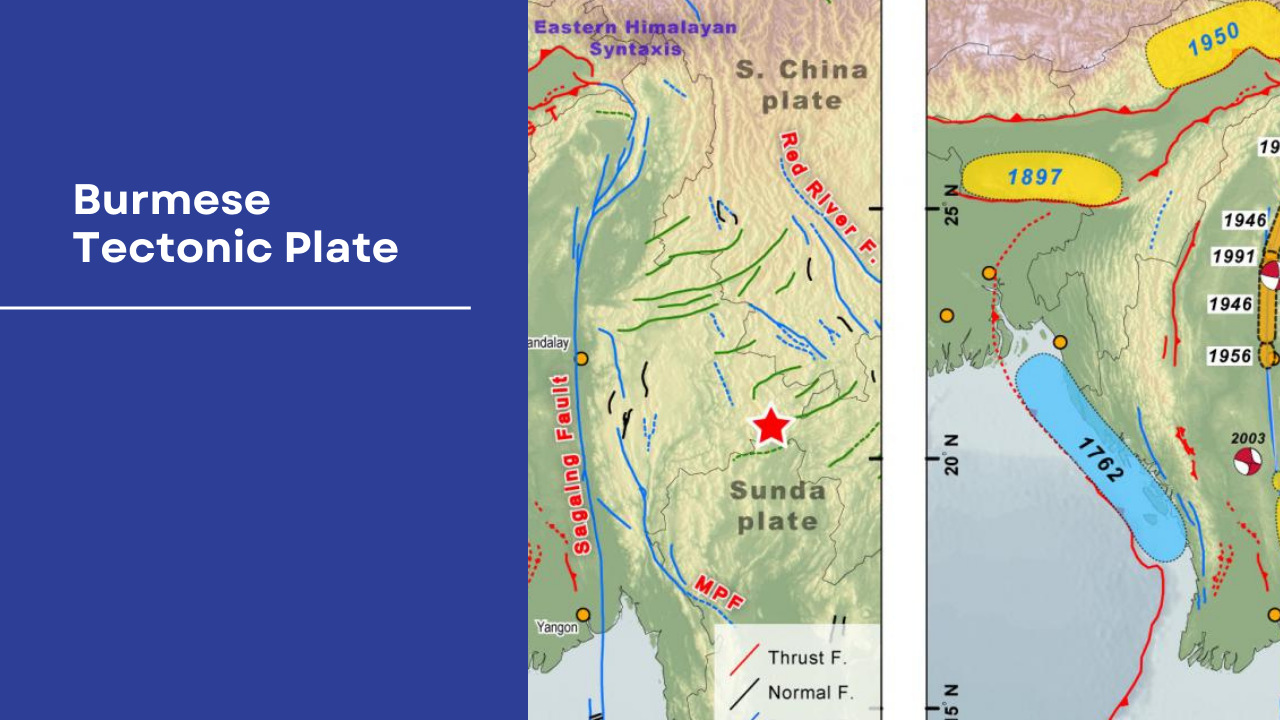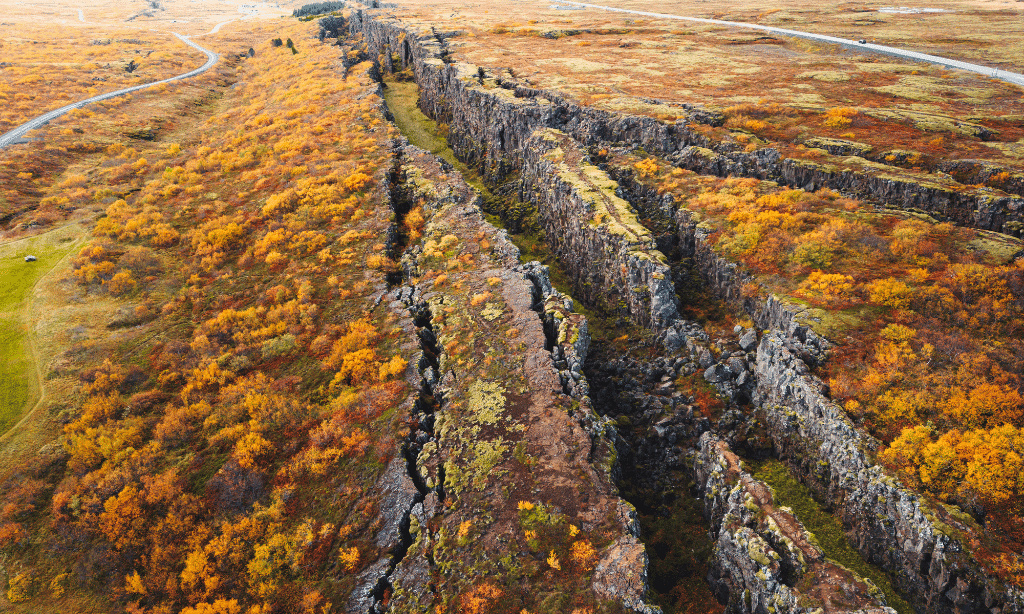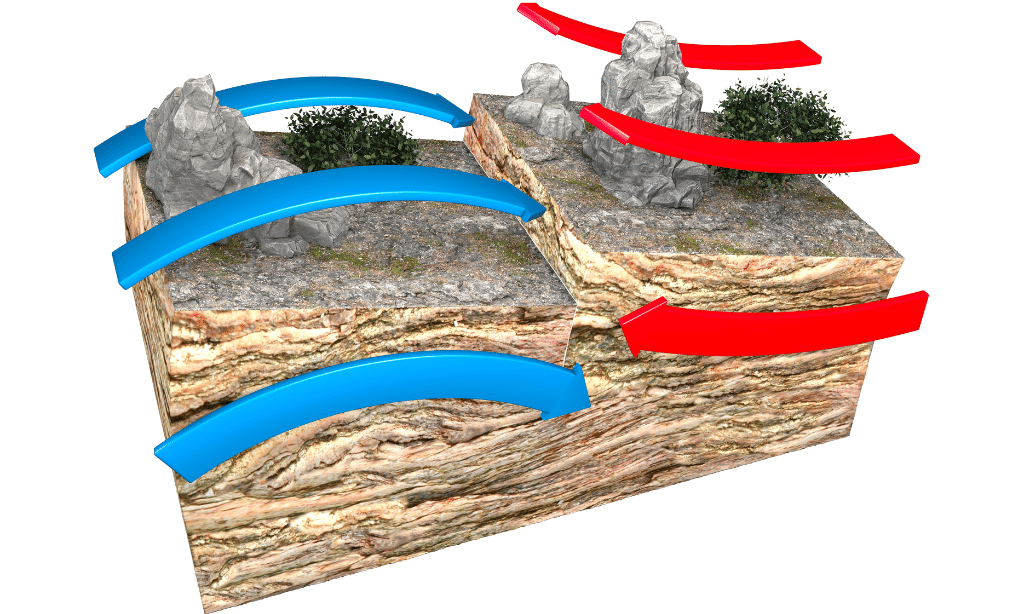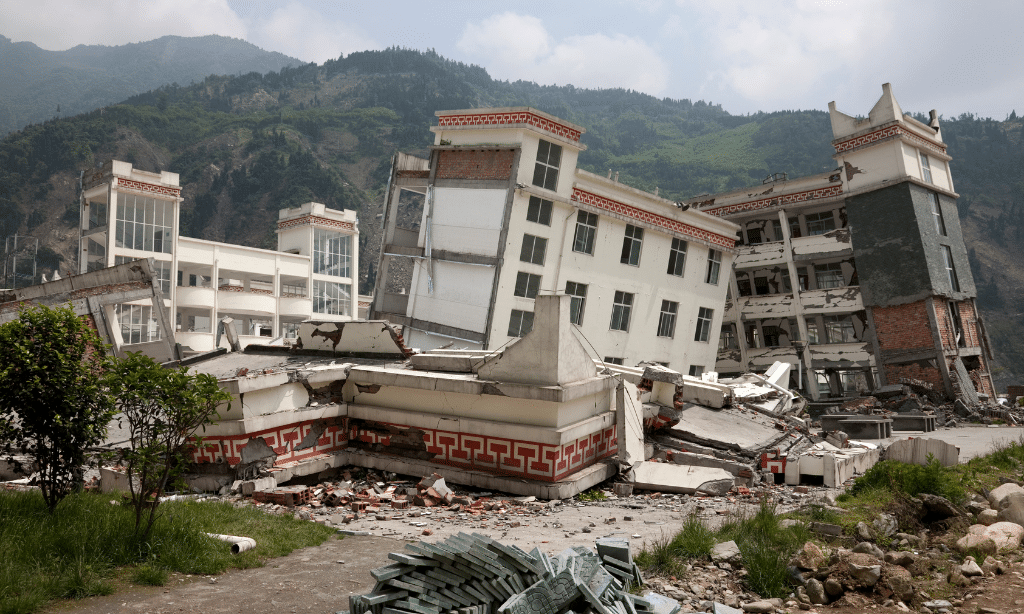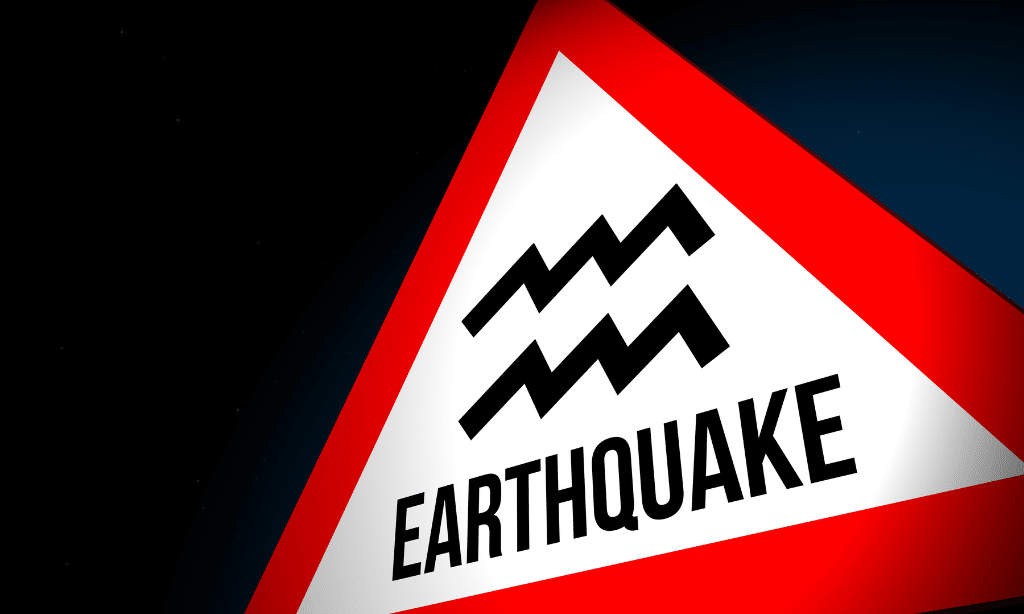The Burmese tectonic plate is a major factor in the risk of a massive earthquake in Bangladesh and India. On December 26, 2004, an earthquake occurred along the boundary between the Indian and Burmese plates, causing devastating tsunami waves that impacted coastal regions around Sumatra.
This blog post will provide you with information about the seismic activity within Myanmar and discuss how it may increase the potential for future earthquakes in Bangladesh and India.
By understanding these factors, you can be better prepared to deal with a possible major natural disaster. Analyzing the movements of this geological phenomenon is essential to ensure safety from potential disasters arising from its power!
Content Highlights
- The Burmese tectonic plate lies between the Indian and Sunda Plate, causing deformation due to movement between them.
- Large magnitude quakes in the Naga Domain are estimated at 8.2 – 9 on the Richter Scale with densely populated cities nearby.
- Indo-Burman Range is located on the northern border of Myanmar with high seismic activity & potential for large earthquakes that could cause destruction in Bangladesh and India.
- The Sagaing Fault present along the Shan domain has caused numerous destructive earthquakes within the last century such as the Dec 26th, 2004 tsunami or the June 11th, 2020 earthquake which measured 7.1 magnitude.
Latest Articles:
What You Need to Know About the Burmese Tectonic Plate
The Burmese Tectonic Plate is located between the Indian Plate to the west and Sundaland in Southeast Asia to the east, with a total area of 1.09 million square kilometers (0.421 million square miles).
Location and Boundaries
The Burmese tectonic plate sits to the east of the Indian Plate in southeast Asia, sharing a common boundary along the Indo-Burman Range. It serves as an active seismic region outside its main boundaries and is adjacent to plates from Australia, South China, India, and Sumatra.
The Ratela border separates it from the Indian Plate and accommodates an average relative motion of 20 mm/yr. High seismicity in this area has produced devastating results: most notably the 2004 earthquake and tsunami which happened along one of its Neurotic margins – suggesting that Bangladesh could be at risk for similar events in the future.
Movement and Interaction With Neighboring Plates
The Burmese Tectonic Plate straddles the meeting point of the Indian Plate, Eurasian Plate, and Burmese Plate. The Indian Plate collides with the Eurasian Plate in a northeast direction at a rate of nearly 20 mm/year; this collision causes deformation between India and Southeast Asia, referred to as the Burma platelet.
In Myanmar, the Sagaing fault acts as an eastern boundary for the Burma tectonic plate while accommodating this movement by roughly 46 mm/year. Neotectonics such as Indoburman Range, Dhaka Domain, Naga Domain, Sagaing Domain, and Shan Domain are seen across large swaths of land in Myanmar that have developed due to this ongoing motion from neighboring plates over millions of years.
The Neotectonics of Myanmar: Why Earthquakes are a Threat
The region is composed of several tectonic provinces, including the Indoburman Range, Dhaka Domain, Naga Domain, Sagaing Domain, and Shan Domain.
Indoburman Range
The Indoburman Range is a region of neotectonics in the Myanmar Region, characterized by a series of prominent fault zones that accommodate a considerable amount of strain. This range runs east-west and occupies most of the northern part of Myanmar, as well as parts of Bangladesh and India.
It includes several important faults such as the Sagaing Fault and Dauki Fault which are responsible for numerous earthquakes throughout history due to ongoing tectonic deformation along them.
The geology also consists of sedimentary rocks, with an anomaly in western Burma on either side at Kyuakata-Jaflong area that occurs up to 1 km below sea level.
With this structure combined with seismicity associated with both regional intraplate earthquake activity within Myanmar itself and some triggered events at plate boundaries from nearby countries like Nepal, India, or China, it represents a serious potential risk when considered alongside other features such as densely populated cities located very close to these active fault lines.
Dhaka Domain
The Dhaka Domain is one of the six neotectonic domains located in Myanmar. It stretches from northern Bangladesh and India along the Ganges-Brahmaputra delta plain and further south until southern Assam and Burma.
The region has undergone significant tectonic activity, with its paleogeographic and tectonic reconstructions being similar to relative motions across major plates-blocking of the region.
As such, this domain is particularly at risk for seismic events due to its heightened levels of tectonic activity and interactivity among engaging neighboring plates. Such a seismic event could result in a massive earthquake with catastrophic consequences – destruction of infrastructure, human casualties, and economic losses – across Bangladesh and India, especially considering these two countries’ high population density. Close attention must be paid to ensure that appropriate measures are taken by both governments and citizens alike in preparation for such an event.
Naga Domain
The Naga Domain is an important part of the neotectonic features in the Myanmar region. Located in Northeast India, it experiences the interaction of three major plates along two convergent boundaries.
Geomorphologic evidence supports its role as a principal feature with its presence involved in large-scale mountain building and extension tectonics in this region. It has contributed to the formation of several topographical features like the Shillong Plateau and Dhaka Basin, which indicate complex movement along the Sagaing fault system running through the domain.
The activity on the Sagaing fault is also revealed by seismic data recorded during the last century suggesting that the Naga Domain may be prone to considerable earthquakes, but there’s still uncertainty regarding possible effects due to limited records available so far from this area.
Large magnitude quakes here have been estimated between 8.2–9, and if they occur, nearby cities will be severely impacted since many densely populated areas lie within a few kilometers radius from the boundary western margin of Naga Domain.
Sagaing Domain
The Sagaing Domain is a region of Myanmar that is associated with neotectonics in the country. It comprises four tectonic domains which include the Indoburman Range, Dhaka Domain, Naga Domain, and Shan Domain as well as the Sagaing Fault.
The fault marks the boundary between the Indian Plate and Sunda Plate and accommodates up to 20 mm/yr of movement at its eastern side, making it one of Earth’s most active transform faults.
Studies suggest that magnitude 7-8 earthquakes could be triggered by slip along this seismic zone, but historical activity suggests smaller earthquakes around magnitude 6 are likely near fault intersections.
Shan Domain
The Shan Domain is an important area of the neotectonics of the Myanmar region, related to the movement and interaction between Indian, Sunda, and Burmese tectonic plates. GPS data suggests dextral strain on this contact zone which is accommodated by a major shear zone known as Sagaing Fault that extends across Myanmar.
This fault was created by the tension between two colliding continental plate sections, creating the Shillong Plateau due to past activity along it. Due to this high degree of seismic activity in this region, there are believed to be significant risks from future earthquakes with potentially destructive consequences for Bangladesh and India, especially near the Indo-Burma mountain chains.
It’s clear then why monitoring seismic activity here is so important in order to quantify risk over time.
Can a Massive Earthquake Strike Bangladesh and India?
Through seismic activity records analysis, scientists have identified localized areas where an earthquake could be triggered.
Past Earthquakes And Their Impact
Over the past 1500 years, many large and destructive earthquakes have occurred in Myanmar.
- In 2012, a magnitude 6.8 earthquake struck about 49 km northwest of Maymyo, killing at least 25 people and injuring over 100 others.
- In October 2019, two major earthquakes measuring up to 6.8 magnitudes rocked Kayin State within 5 minutes of each other, one located near Mawlamyaing city and another centered further north around Kyaukkyi town.
- On April 13th, 2021 a magnitude 7.1 earthquake damaged more than 700 buildings in Kalay township in Sagaing Region which was felt across much of Southeast Asia and India including Manipur and Assam states and Bangladesh’s urban centers such as Dhaka.
- Another famous quake occurred on Dec 26th, 2004 along the boundary between Burma’s tectonic plate and India’s Tectonic Plate resulting in a tsunami that killed over 200,000 people in coastal regions from Vietnam to Somalia.
Risk Factors for Future Earthquakes
The Burmese tectonic plate is situated in one of the Earth’s most active seismic zones, with boundary faults and converging subduction zones.
Over 100 earthquakes above 4.4 magnitudes have occurred within this region since 1900 highlighting the frequency of earth tremors in the area.
Studies suggest that a large earthquake could occur at depths greater than 50km due to movement between floating microplates which would be felt over Bangladesh and India.
The population density around these major fault lines significantly increases potential damage from an earthquake as millions will be left vulnerable to catastrophic consequences.
Key Features of the Burmese Tectonic Plate that Put Bangladesh and India at Risk
There are multiple factors of the Burmese Tectonic Plate that can lead to massive earthquakes in the near future. Let’s explore the critical elements of the Burmese Tectonic Plate and their significance in understanding earthquake risk.
The Indoburman Range: a Fault Line Waiting to Happen?
Sitting on the northern border of Myanmar, The Indoburman Range contains several seismic zones due to its complex geological structure concerning an earthquake in Bangladesh and India.
Seismic Activity and Potential for Earthquakes
The India-Burma plates, which intersect the Indo-Burman arc, have created significant seismic conditions in the Myanmar region and put Bangladesh and India at risk of large damage from earthquakes.
Subduction zones between two tectonic plates occur when one plate submerges beneath another. This movement creates friction resulting in seismic activity that can lead to dangerous quakes.
The Indo-Burmese arc is intertwined with many fault systems indicative of increased seismic activity. Past earthquakes here have ranged from magnitudes 6.5 to 8 on the Richter scale, causing destruction and loss of life as far away as Nepal, Bangladesh, China, and Thailand.
This makes it a potential disaster hotspot for future events if not managed properly by governments and organizations throughout this region, putting numerous lives at risk daily. They don’t know when an earthquake might happen again.
This region shares borders with some highly populated cities such as Dhaka City in Bangladesh or Kolkata City near the Indian border. These cities could be hit hard with dire consequences should an incident happen due to their proximity to this plate boundary line called IBA (Indo-Burman Arc).
Impact on Neighboring Countries (Bangladesh And India)
A massive earthquake brewing beneath Bangladesh, Myanmar, and India could have devastating consequences for the region. Bangladesh and India are especially at risk due to the high population density of these two countries.
An estimated 140 million people in these two nations are at risk of being severely affected by this potential event.
The destruction caused by such an earthquake could be calamitous. Infrastructure, particularly buildings that were intended to resist earthquakes up to a certain magnitude, might be completely destroyed if a higher magnitude is encountered than what was planned for with the engineering standards used during construction.
The Sagaing Fault: One of the Most Active Faults in the World
The Sagaing Fault is one of the major active faults in Southeast Asia, running along the western border of Myanmar and extending beyond Bangladesh.
Characteristics of The Fault
The Sagaing Fault is located between the Indian Plate and Sunda Plate, making it a continental right-lateral transform fault. This means that movement occurs from right to left in a horizontal or near-horizontal plane relative to this boundary.
The specific orientation of the fault causes it to produce high seismic activity due to its high displacement rate which accompanies elastic strain accumulation along the plate boundaries.
Geological evidence suggests that the current dextral motion accommodates an average total of 20 mm/yr at the eastern boundary of the Burma plate.
Additionally, active tectonic features such as grabens and seismic activity spots are present along sections of this particular fault line, indicating accumulated strain and therefore greater potential for earthquake events in the Myanmar region and surrounding area including Bangladesh and India.
Historical Earthquakes And Potential For Future Ones
There is a long history of seismic activity in the Myanmar region. One of the most destructive earthquakes was on October 8th, 1930, in the Bago Region Administrative State of Burma. This earthquake had a magnitude of 8 on the Richter scale, resulting in at least 57 deaths and widespread destruction of buildings and infrastructure.
The 2005 Kyaukse Earthquake occurred near the Sagaing Fault, with a maximum intensity of IX (on a modified Mercalli Scale). Shaking was felt across 17 districts and 11 cities in upper Myanmar. It killed 22 people and left thousands homeless.
In 1995, an earthquake with a magnitude of 7 hit Chiang Mai (Thailand). Earthquakes have also been recorded along the Bangladesh-Myanmar border, southwards from Waigao hill, located between Bangladesh’s Mymensingh district, Dinajpur district, Meghalaya India, Mizoram, and Northeastern states. Manipur to Tripura has experienced damage due to earthquakes farther eastward towards Bangladesh’s southeastern coast, including Cox’s Bazaar area.
There is potential for further earthquakes resulting from both active faults as well as blind ones that lie beneath the surface but are yet undiscovered. These undiscovered faults may cause massive devastation if they loosen or shift suddenly, similar to the tragic Airbus 330 crash during the northern summit meeting by Steplans, having insights into the situation.
With pressure mounting on fault lines due to tectonic movement, it could lead to more significant events than what we have witnessed before. This could result in catastrophic consequences for neighboring countries like India and Bangladesh. A major quake relatively close to Indonesia recently affected their disaster preparedness measures. Such measures should be implemented to reduce the risk that such disasters bring upon mankind, impacting health, economy, and social status across various spheres.
Threat To Densely Populated Areas
The Burmese Tectonic Plate poses a significant threat to densely populated areas in Bangladesh and India due to the presence of multiple geologic faults that can trigger devastating earthquakes.
The Sagaing Fault is arguably one of the most dangerous plate boundaries in this region, stretching 1,200 km along the central Myanmar mountain ranges. This fault has been associated with at least five major earthquakes over the past two centuries; three were destructive quakes that affected communities across northeast India, Bangladesh, and Myanmar.
The delta region of Bangladesh similarly presents an imminent danger for potential seismic developments since it is composed largely of old sediment deposited by rivers coming from India’s Ganges-Brahmaputra system and other sediments resulting from soils eroded from nearby mountains.
These loose soils are particularly vulnerable to seismic disturbances as they can amplify wave motion — making landslides more likely — which could lead to further damage such as groundwater contamination and disruption in communication infrastructure caused by power outages or telecommunications towers toppling over.
In addition, these soil types provide inadequate foundation support for tall buildings, increasing risk in densely populated cities if faced with a potentially catastrophic earthquake event.
The Shan Domain: a Hotspot for Earthquakes
Known for seismic activity, the Shan Domain poses a potential risk of devastating earthquakes to heavily populated regions in Bangladesh and India.
Seismicity and Earthquake Concerns
The Myanmar region contains several tectonic plates that are prone to seismic activity and earthquakes, with the Burmese Tectonic Plate stretching from Bangladesh through India to central Myanmar.
The Indo-Burmese Arc (IBA) is characterized by complex geodynamics and strain accumulation due to the interaction of multiple tectonic plates, leading to highly seismic areas that pose a risk of major earthquakes in India, Bangladesh, and parts of Myanmar.
Of particular concern is the Shan Domain associated with the Burmese Plate where seismic activity often occurs; this domain includes northern Thailand, western China, northern Laos, and parts of eastern Burma eastward along strike sources into northeastern India.
Similarly, The Sagaing Fault located near Mandalay experiences regular movement between two zones – one mostly in unbroken segments that generate shallow tsunamis with low magnitude earthquakes and another known as a transform zone connected to deep earthquake source segment – increasing its potential for destructive earthquakes.
Areas At Risk in Bangladesh and India
Bangladesh and India, two of the most densely populated countries in the world, are at significant risk from a major earthquake due to their location in a tectonically active region.
The Indo-Burman Arc (IBA) region is home to 140 million people living along the convergence of multiple tectonic plates, making it particularly vulnerable to seismic hazards. In Bangladesh alone, over 120 million people live on top of an area covering a fault line that stretches thousands of kilometers from Nepal down across Myanmar and into Bangladesh itself.
This fault line has shown immense potential for destructive earthquakes—with one study predicting an 8+ magnitude quake could create widespread destruction and loss of life along fertile agricultural regions around Dhaka City.
In addition to this risk posed by interplate motion within the IBA region, there are several other geotectonic features that increase seismic hazard levels for Bangladeshis and Indians alike.
Most notable is the Naga Fault in Northeast India—a shallow plate boundary between two subducting oceanic plates which created large areas filled with volcanic activity stretching across Bangladesh & Northwestern Burma towards peninsular India.
What Would Happen If a Massive Earthquake Struck Bangladesh and India?
If a large earthquake occurs in the Burmese Tectonic Plate, it could lead to the destruction of infrastructure and displacement of people and have devastating economic impacts.
Destruction of Infrastructure
Bangladesh and India are both at risk of fatal consequences in the event of a massive earthquake. The destruction of roads, bridges, buildings, and other critical infrastructure can be devastating for these countries.
Buildings that have not been designed with seismic capacity may suffer major damage or completely collapse in the event of a large quake.
Bridges may be damaged due to tectonic movement while on-road vehicles might be thrown off or diverted from their path during an earthquake’s effects depending on its intensity.
Human Casualties and Displacement
A massive earthquake in Bangladesh and India would result in devastating human casualties.
Since the region is densely populated, a powerful magnitude 6 or above quake could cause many deaths. Additionally, people will be displaced from their homes due to the destruction caused by the shaking ground and subsequent landslides.
Economic resources such as hospitals, schools, factories, and other buildings might also suffer heavy damage leading to loss of jobs for locals and disruption in essential services such as water supply.
Furthermore, it might take years for affected countries’ economies to recover from such devastation further exacerbating the already vulnerable population that falls victim to overseas companies profiting off exploiting resources like natural gas with little regulation if any.
Economic Impact
A massive earthquake in Bangladesh and India could have devastating economic consequences. The destruction of infrastructure and the significant loss of life would undoubtedly burden the countries with a heavy financial cost.
- Damage to infrastructure such as bridges, roads, and airports could limit access to landlocked or remote areas and reduce trade opportunities within both countries.
- Many manufacturing plants may suffer irreparable damage due to shaking intensity, further worsening regional industrial output.
- Machinery used for agriculture farming such as irrigation systems, grain storage facilities, etc., could be destroyed, leading to a potential reduction in crop yields, directly affecting people’s livelihoods and agricultural productivity across South Asia.
- The hotels/tourism industry will take a hit due to decreased demand from tourists who fear traveling during uncertain times and prioritize visiting places deemed safe from natural hazards like an earthquake or floods.
- Industries and businesses can face consequences due to the lack of insurance coverage. This is often caused by a lack of awareness about risk factors among the general population. As a result, many businesses find themselves without compensation when their operations collapse.
This collapse can occur either directly due to the impact of events like earthquakes or indirectly as a result of insufficient resources available at the time of such disasters.
For example, businesses might find themselves low on essential resources like crops and fuel, further exacerbating the challenges they face during and after such events. In these circumstances, insurance can be a lifeline, providing financial support and helping businesses recover from unexpected setbacks.
How to Prepare For a Potential Earthquake?
Governments and organizations around the world have taken measures to reduce the risks of major earthquakes, but individuals can also play an active role in preparing for them.
You can also read How to Activate Google Earthquake Alert on Your Android Phones!
Measures Taken By Governments and Organizations
In Bangladesh and India, governments and organizations have implemented many initiatives, policies, and actions to reduce the risk of an earthquake.
- Governments in Bangladesh have established a comprehensive building code with strict standards for construction to ensure that buildings can withstand seismic forces. In addition, efforts are made to inform citizens of such standards as well as instructions on what to do during an earthquake.
- The Dhaka City Corporation has developed a more proactive approach towards minimizing damage from earthquakes – enforcing the Building Code is considered one of their main strategies for regulatory control over urban risk reduction.
- Various NGOs like BRAC also play a major role in providing relief services during natural disasters such as earthquakes while also increasing public awareness about them through educational programs for school children and community members regarding preventive measures they can implement before or during times of crisis.
- Indian states like Sikkim have formed committees at both state and district levels tasked with preparing response plans for different types of disasters including earthquakes; these bodies further supervise mitigation strategies taken up by various agencies throughout their respective jurisdictions.
- Many universities across both countries conduct regular surveys intended specifically to evaluate people’s knowledge regarding potential risks posed by major seismic events; this helps officials determine the most effective ways preventive information should be disseminated amongst communities to increase overall preparedness levels within society at large.
How Individuals Can Prepare For Earthquakes
Equipping ourselves with knowledge and taking proactive steps can make all the difference when it comes to safeguarding lives and property from the potentially devastating impact of earthquakes. Here are some crucial ways in which individuals can prepare for such seismic events.
- Update and enforce building codes to increase earthquake preparedness and reduce risk.
- Educate the public on how to prepare for earthquakes by creating awareness programs about what action is necessary in case of a quake.
- Train rescue teams to effectively respond to a worst-case situation amid an earthquake and provide basic first aid services after one has occurred.
- Secure their space before an Earthquake – Identify potential hazards (e.g., fallen objects that may create blockages) and secure moveable items within the home or office premises such as bookcases, computers, etc., so they don’t fall during shaking!
- Consider seismic retrofitting older buildings built with weaker materials purpose of reducing damages from seismic forces during future quakes.
- Educate people on the use of the latest technologies like Google Maps to get prior alerts for natural disasters.
Frequently Asked Questions (FAQs)
Here, we answered some commonly asked questions about the Burmese tectonic plate. If you have queries, check the answers.
1. What Is The Burmese Tectonic Plate?
The Burmese Tectonic Plate is a major tectonic plate located in Earth’s lithosphere, mostly east of India and Bangladesh. It borders the Indian plate to the west and meets parts of South China, Myanmar, Thailand, Malaysia, and Sumatra along its northern edge.
2. How Can Seismic Activities Be Tracked?
Seismic activity can be monitored by global positioning systems (GPS) instruments on the surface or buried within trenches to observe ground deformation over time as an indication of tsunamis or potential earthquakes.
3. What Are Some Factors That Put Bangladesh And India At Risk For A Massive Earthquake?
Bangladesh and India are both at risk for a massive earthquake due to their location on the Burmese Plate, which is actively colliding with the Indian plate. This collision causes the Indian plate to buckle and fold, forming mountains and faults. The faults in the region are capable of generating large earthquakes, including those with magnitudes greater than 8.0.
4. Is There Anything Governments Can Do To Reduce This Risk?
By instituting building regulations, such as ensuring that any infrastructure being built follows practices aimed at mitigating shocks during an earthquake, and implementing reforestation initiatives in deforested areas accompanying uplifting before displacement, we can collectively work to reduce both the direct devastation caused by tremors and potential lives lost during seasonal shifts into hazardous regions.
End Note
Conclusively, the Burmese tectonic plate plays a major role in driving seismic activity in Bangladesh and India. The intersection of three tectonic plates – Indian, Eurasian, and Burmese – creates an earthquake risk zone that could cause devastating destruction if a large earthquake were to happen.
In particular, the Indoburman Range and the Sagaing Fault are two areas that can generate massive earthquakes with severe consequences such as destruction of infrastructure, human casualties, displacement due to landslides or flooding, economic loss, or social disruption for affected countries.
Therefore it is important to take proactive steps when tackling this risk such as having comprehensive emergency plans in place and introducing appropriate safety regulations designed to reduce potential harm from major earthquakes.


